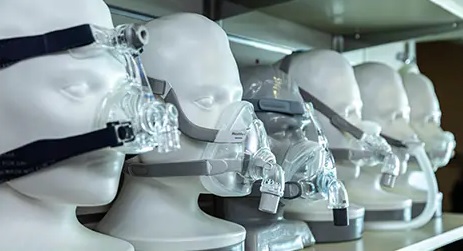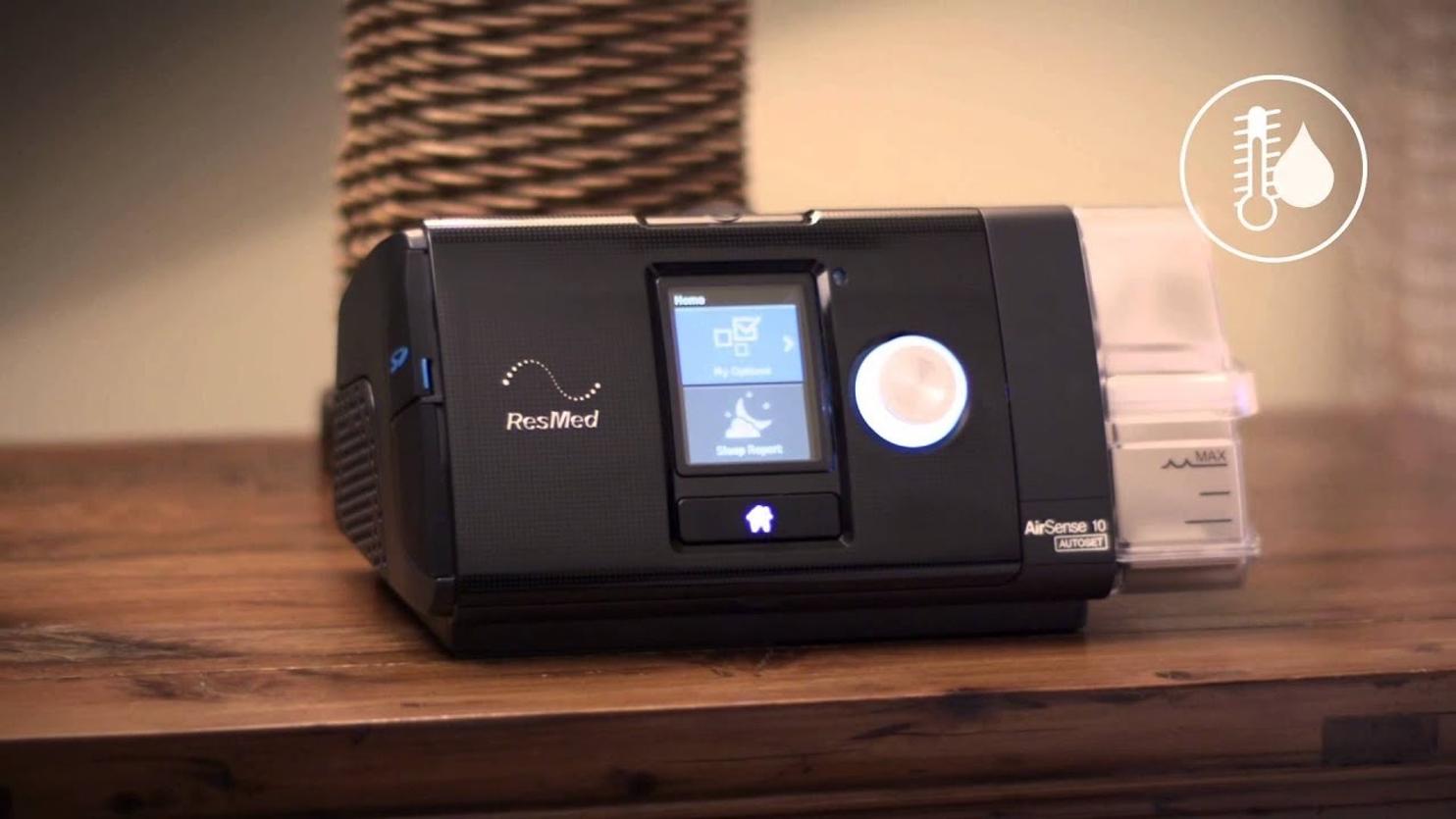Sleep apnea is a prevalent sleep disorder affecting millions worldwide, characterised by pauses in breathing during sleep. Continuous Positive Airway Pressure (CPAP) machines have emerged as a revolutionary treatment for sleep apnea, offering relief to those suffering from this condition.
Global Sleep Apnea Device Market Overview
The Sleep Apnea Device Market Size was valued at USD 5.5 billion in 2022 and is projected to grow from USD 5.9 Billion in 2023 to USD 8.6 billion by 2030, exhibiting a compound annual growth rate (CAGR) of 6.52% during the forecast period (2023 – 2030).
Growing public awareness, the aging population, the prevalence of the condition, and the need for better OSA diagnosis and treatment are a few of the major market drivers influencing the growth of the sleep apnea market.

The Pressure Required For CPAP Therapy
The pressure required for CPAP therapy is typically determined by a sleep specialist or healthcare provider based on a sleep study or titration study.
However, if you’re looking for a basic understanding of the pressure calculation, it’s not derived from a simple mathematical equation but rather from clinical evaluation and patient response.
That said, the pressure delivered by a CPAP machine is usually measured in centimeters of water (cmH2O). The pressure setting is typically determined by gradually increasing the pressure until it is sufficient to keep the airway open during sleep.
Here’s a simplified overview of how CPAP pressure is determined:
- Titration Study: This is a sleep study conducted in a sleep clinic or lab where the patient is monitored while using CPAP equipment. During the study, the pressure settings are adjusted until the optimal pressure is found to effectively treat the patient’s sleep apnea.
- Pressure Requirements: The pressure needed can vary widely among individuals and can range from 4 cmH2O to 20 cmH2O or more, depending on the severity of the sleep apnea and individual characteristics.
- Patient Comfort and Efficacy: The pressure must be high enough to keep the airway open throughout the sleep cycle but not so high that it causes discomfort or side effects. The patient’s feedback, along with data from the sleep study, helps determine the appropriate pressure setting.
- CPAP Machines: Modern CPAP machines often have features like auto-titration, which can adjust the pressure automatically based on the patient’s breathing patterns throughout the night. This helps optimize therapy without the need for manual adjustments.
While there isn’t a simple mathematical equation to determine CPAP pressure, it’s a carefully personalised process based on clinical evaluation, patient response, and sometimes aided by technology with autosensing.
Sleep Apnea Device End User Insights
The Sleep Apnea Device Market segmentation, based on application, includes Home Care Settings and Sleep Laboratories & Hospitals. The home care settings segment dominated the market growth for sleep apnea device in 2022 and is projected to be the faster-growing segment during the forecast period, 2022-2030.
Players in the market are concentrating on producing novel, portable gadgets for patients receiving treatment for the ailment to use at home. The need for these devices in homecare and other settings is rising as a result of this and the growing desire for treating OSA at home, particularly in nations like the U.S., U.K., Germany, and Japan, among others.
The Birth of CPAP: A Remarkable Invention
In 1980, Colin Sullivan revolutionized sleep medicine with his invention of the CPAP machine. Originally seeking assistance from his university’s Business Liaison Office for patent protection, Sullivan encountered obstacles.
Undeterred, he utilised his own resources to patent the “Device for treating snoring sickness,” which was issued as Australian Patent AU 560,360. This pioneering step paved the way for the development and widespread adoption of CPAP therapy worldwide.
How Many Australians Have Sleep Apnea?
It’s estimated that about 5% of Australians have sleep apnoea, with around 1 in 4 men over the age of 30 affected. In the over-30 age group, the disorder is about 3 times more common in men than women
Understanding Sleep Apnea
Before delving into CPAP technology, it’s crucial to grasp the nature of sleep apnea. There are three main types: obstructive sleep apnea (OSA), central sleep apnea (CSA), and mixed sleep apnea (a combination of OSA and CSA). OSA, the most common type, occurs when the throat muscles intermittently relax and block the airway during sleep.
Consequences of Untreated Sleep Apnea
Consequences of untreated sleep apnea include daytime fatigue, impaired cognitive function, cardiovascular problems, and an increased risk of accidents. CPAP machines play a pivotal role in managing sleep apnea, providing a continuous flow of pressurized air to keep the airway open during sleep.
Understanding the Mechanics of CPAP Machines
At its core, CPAP technology relies on the delivery of a continuous stream of pressurized air to keep the airway open during sleep. This positive airway pressure acts as a pneumatic splint, preventing airway collapse and ensuring unobstructed breathing throughout the night.
The components of a CPAP machine, including the motor, humidifier, mask, tubing, and filters, work in harmony to deliver effective therapy while prioritising user comfort and compliance.
How CPAP Machines Work
At the heart of CPAP technology lies the device’s ability to deliver a steady stream of pressurized air through a mask worn over the nose or both the nose and mouth.
The continuous positive airway pressure acts as a pneumatic splint, preventing airway collapse and maintaining unobstructed breathing throughout the night.
The Components of a CPAP Machine:
- Motor: The motor generates the airflow and maintains the prescribed pressure level throughout the night. Modern CPAP machines are designed to be quiet and compact, enhancing user comfort.
- Humidifier: Many CPAP machines feature an integrated humidifier to add moisture to the airflow, reducing dryness and irritation in the airway. Humidification enhances user comfort and compliance with therapy.
- Mask: CPAP masks come in various designs, including nasal masks, nasal pillows, and full-face masks. The mask forms a seal over the nose or nose and mouth, ensuring the delivery of pressurized air to the airway.
- Tubing: The tubing connects the CPAP machine to the mask, facilitating the delivery of pressurized air. Flexible and lightweight tubing allows for freedom of movement during sleep.
- Filters: Filters in the CPAP machine trap dust, pollen, and other airborne particles, ensuring the delivery of clean and filtered air to the user’s airway.
- Ramp Feature: Some CPAP machines include a ramp feature, allowing users to start therapy at a lower pressure and gradually increase to the prescribed pressure level as they fall asleep.
The Science Behind CPAP Efficacy
Numerous studies have validated the efficacy of CPAP therapy in treating sleep apnea and its associated symptoms.
By maintaining continuous positive airway pressure, CPAP machines effectively reduce the frequency of apneas and hypopneas, thereby promoting restful sleep and improving daytime function.
Benefits of CPAP Therapy:
- Enhanced Sleep Quality: CPAP therapy promotes uninterrupted sleep, alleviating symptoms of daytime fatigue and sleep fragmentation.
- Cognitive Function Optimisation: By optimizing oxygenation and reducing sleep disruptions, CPAP therapy can enhance cognitive function, memory, and concentration.
- Cardiovascular Protection: Effective treatment of sleep apnea with CPAP therapy has been linked to reduced cardiovascular risk, including hypertension, stroke, and heart disease
. - Increased Vitality: Users often report increased energy levels and a greater sense of vitality after initiating CPAP therapy, attributed to improved sleep quality and oxygenation.
The Science Behind CPAP Efficacy
Numerous studies have demonstrated the efficacy of CPAP therapy in treating sleep apnea and improving associated symptoms. By maintaining continuous positive airway pressure, CPAP machines prevent airway collapse, reducing the frequency of apneas and hypopneas during sleep.
Benefits of CPAP Therapy:
- Improved Sleep Quality: CPAP therapy promotes uninterrupted sleep, alleviating symptoms of daytime fatigue and sleep fragmentation.
- Enhanced Cognitive Function: By optimizing oxygenation and reducing sleep disruptions, CPAP therapy can enhance cognitive function, memory, and concentration.
- Cardiovascular Health: Effective treatment of sleep apnea with CPAP therapy has been linked to reduced cardiovascular risk, including hypertension, stroke, and heart disease.
- Increased Energy and Vitality: Users often report increased energy levels and a greater sense of vitality after initiating CPAP therapy, attributed to improved sleep quality and oxygenation.
Challenges & Innovations
Despite its efficacy, CPAP therapy poses challenges such as mask discomfort, nasal congestion, and non-compliance. However, ongoing technological innovations aim to address these issues, with advancements in mask design, humidification systems, and pressure algorithms enhancing user comfort and adherence to therapy.
What Is The Success Rate of CPAP?
Although CPAP demonstrates high effectiveness when utilised correctly, numerous patients encounter challenges in adhering to the prescribed guidelines, resulting in a success rate ranging from only 23% to 45%. Conversely, when employed as instructed, CPAP boasts an almost flawless success rate of nearly 100%.
How Does Your Body Change After a CPAP machine?
After using CPAP, your energy levels should increase, helping you concentrate more on work, focus on daily tasks, and feel refreshed. Before starting therapy, many people experience symptoms of depression, anxiety, and poor mental health
How many people can tolerate CPAP?
Research findings indicate that a notable proportion of individuals diagnosed with obstructive sleep apnea (OSA) may experience difficulty tolerating continuous positive airway pressure (CPAP) therapy, with long-term adherence rates potentially dropping as low as 30%.
How many people give up on CPAP machines?
Studies suggest that from one-third to more than 50% of patients either stop using their CPAP machine or never bother to fill their prescription. They quit for a variety of reasons, but mostly because the device can be cumbersome and uncomfortable.
Is CPAP 100% effective?
The gold-standard treatment for sleep apnea is the CPAP machine. If you can wear it, it’s 100% effective. If you can sleep with a CPAP machine, it can provide a 100% correction.
What’s the downside to CPAP?
Common problems with CPAP include a leaky mask, trouble falling asleep, a stuffy nose and a dry mouth. But if a CPAP mask or machine doesn’t work for you, you have other options. And most CPAP masks can be adjusted to help make them more comfortable.
Can People Become Dependent On CPAP machines?
While the machine itself is not addictive, patients become addicted to the results of regular CPAP use. These results include getting better sleep and feeling more energize and focused. If they stop using CPAP, their sleep apnea symptoms will return, along with drowsiness and lack of concentration.
What Happens When Using A CPAP Machine?
Those with untreated Sleep Apnoea experience continuous breathing interruptions. Using CPAP reduces the number of these interruptions thus lowering your AHI (Apnoea Hypopnoea Index) so you wake up feeling refreshed from a restful night’s sleep.
Reducing your AHI also controls the symptoms of OSA, decreasing the risk of developing other health conditions and helping you manage the disorder. Body changes after CPAP include:
- Improved sleep
By maintaining a clear airway, CPAP therapy ensures optimum oxygen levels and reduces interruptions in breathing. This, in turn, allows for more restful and uninterrupted sleep cycles. Many people experience better sleep in as little as a week after starting treatment.
- Better cardiovascular health
Untreated Sleep Apnoea is linked to decreased cardiovascular health, increasing the risk of heart disease, atrial fibrillation and heart attacks(1). CPAP prevents OSA episodes, ensuring an uninterrupted oxygen supply and stable blood pressure throughout the night. This reduces the strain on the heart and lowers the risk of heart-related issues.
Consistent CPAP use can lead to improved cardiovascular health, reduced blood pressure, and a lower likelihood of developing severe heart conditions.
- Reduced risk of diabetes
Using a CPAP machine reduces the risk of developing diabetes by improving sleep quality and lowering the chances of insulin resistance. The equipment stabilises the effects of OSA on blood sugar levels, insulin resistance, and glucose metabolism. These factors make it less likely for you to develop diabetes.
- Better metabolic health
The frequent obstructions that put stress on your body can disrupt your metabolism, which is the process that turns food into energy.
Using a CPAP machine allows you to gain deeper, more restful sleep and may help your body to regulate its metabolism more effectively. With better sleep, your body can efficiently process food for energy, manage weight, and maintain a healthy metabolic rate.
- Lower blood pressure
Before using a CPAP machine, you are at risk of higher blood pressure. The frequent awakenings and oxygen drops strain your heart and blood vessels, leading to high blood pressure over time.
Essentially, untreated OSA puts stress on your body, making your heart work harder and your blood pressure rise, which can increase the risk of other health issues.
CPAP therapy can help control your blood pressure levels. If you suffer from high blood pressure and use a blood pressure monitor, you should continue to use this.
- Increased alertness & energy
Sleep Apnoea is commonly characterised by low energy, lethargy, and poor concentration due to constant fatigue. After using CPAP, your energy levels should increase, helping you concentrate more on work, focus on daily tasks, and feel refreshed.
- Improved mental well-being
Before starting therapy, many people experience symptoms of depression, anxiety, and poor mental health. Experts are not aware of why OSA can cause these negative symptoms to your mood, but it could be due to low oxygen levels causing changes to the brain that can affect mood.
- Reduced or eliminated snoring
After using a CPAP machine, many people stop snoring completely as their airways are no longer obstructed. There are various causes of snoring, and if you continue after settling into therapy, you may need to see an ENT specialist to get to the root cause.
- Fewer headaches
Lack of sleep can cause you to frequently wake up with a headache as your body is not gaining restorative sleep. Many people experience reduced morning headaches when using a CPAP machine as they regain restorative sleep.
- Reduced risk of road accidents
Tiredness contributes to up to 20% of road accidents a year as it causes many drivers to lose control at the wheel (2). Getting your sleep back on track by using a CPAP machine ensures you are more alert when driving, reducing the risk of road accidents.
- Healthier pregnancy
CPAP therapy ensures you get enough oxygen while sleeping by keeping your airways open. This is important because a growing baby needs a steady oxygen supply for healthy development.
Untreated Sleep Apnoea during pregnancy can increase the risk of complications such as high blood pressure, gestational diabetes, and preeclampsia.
CPAP lowers the risk of these by improving sleep and oxygen supply. Better sleep quality can lead to increased energy levels and improved mood during pregnancy, making it easier to cope with the physical and emotional demands of carrying a baby. Enhancing sleep quality also helps to balance the hormones of women with Sleep Apnoea.
- Decreased male reproductive issues
OSA is associated with an increased risk of infertility in men. Untreated OSA may lead to decreased spermatogenesis, decreased sperm quality, and, therefore, reduced fertility.
- Increased life expectancy
CPAP can potentially increase life expectancy for individuals with Obstructive Sleep Apnoea by addressing several key health risks associated with the condition.
It’s important to note that the effectiveness of CPAP therapy in increasing life expectancy may vary among individuals based on their specific health conditions, compliance with therapy, and other factors.
However, when used consistently and as prescribed, CPAP therapy can significantly improve the health and well-being of individuals with OSA, potentially leading to a longer and healthier life.
Future Directions
The future of CPAP technology holds promise for further innovation and customisation. Artificial intelligence (AI) and machine learning algorithms may enable personalised CPAP therapy, adapting pressure settings and humidification levels in real-time based on individual sleep patterns and physiological responses.
Moreover, miniaturisation and connectivity features may enhance portability and remote monitoring, empowering users and healthcare providers.
Tech Advancements Have Significantly Improved (CPAP)
Over the years, advancements in technology have significantly improved Continuous Positive Airway Pressure (CPAP) treatment, revolutionising the way sleep apnea is managed.
The new advancements have made CPAP therapy more accessible, convenient, and effective for users. Here’s how technology has facilitated these improvements:
- Autosensing Machines: One of the notable advancements in CPAP technology is the introduction of autosensing machines. These devices are equipped with sophisticated sensors that can detect the user’s breathing patterns and adjust air pressure accordingly.
This means that users no longer need a prescription specifying the exact pressure settings, as the machine can automatically adjust to the individual’s needs and simplifies the setup process by ensuring optimal therapy without the need for constant adjustments. - RAMP Time: Another feature that has enhanced the user experience is the inclusion of ramp time settings in CPAP machines. Ramp time allows users to start with a lower air pressure that gradually increases to the prescribed level over a specified period.
This gradual adjustment makes it easier for users to acclimate to the sensation of wearing a CPAP mask and breathing against the airflow, thereby improving comfort and compliance, especially for new users. - Connectivity: Modern CPAP machines are equipped with connectivity features such as 4G connections, Wi-Fi, or Bluetooth, enabling seamless data transmission to healthcare providers or sleep clinics.
4G wireless connectivity allows healthcare professionals to remotely monitor patients’ therapy progress, track compliance, and adjust settings as needed without requiring frequent in-person visits.
Additionally, users can access their own therapy data through smartphone apps or web portals, empowering them to take a more active role in managing their sleep apnea treatment. - Data Analysis and Feedback: CPAP machines now incorporate advanced data analysis capabilities, providing insights into sleep patterns, mask fit, and therapy effectiveness.
The data can help users and healthcare providers identify issues such as mask leaks or airway obstruction, allowing for timely adjustments to improve therapy outcomes. |
Moreover, personalized feedback and coaching features guide users in optimizing their sleep hygiene and CPAP usage habits, fostering better adherence to treatment. - Comfort and Design: Technological advancements have also led to improvements in the design and comfort of CPAP devices. Modern machines are quieter, more compact, and ergonomically designed, enhancing user comfort and minimizing disturbances to bed partners.
Additionally, innovations in mask design, materials, and cushioning technology have reduced common issues such as skin irritation and pressure sores, further improving the overall CPAP experience.
Different Types of CPAP Machines (AKA PAP Machines)
CPAP Machines
Continuous positive airway pressure is the most common type of PAP therapy. CPAP machines provide constant pressure to keep your upper airway open as you sleep. Some CPAP machines include a pressure relief setting to slightly lower the amount of pressure during exhalation.
APAP Machines
Auto-adjusting positive airway pressure (APAP) machines, also referred to as auto-CPAP, can raise or lower the pressure based on your breathing patterns. This is often more comfortable for sleepers whose pressure needs change between sleep positions, or those who have trouble tolerating CPAP therapy
BiPAP Machines
Bilevel positive airway pressure (BiPAP or BPAP) machines have two pressure settings, switching between a higher pressure as you inhale and a lower pressure as you exhale. BiPAP machines often have a wider pressure range, reaching up to 30 cm H2O
Travel CPAP Machines
Travel CPAP machines work like traditional CPAP machines but have a more portable design. These devices are usually small and lightweight. Some models are also FAA-approved and can be used in flight, though specific policies may vary by airline.







